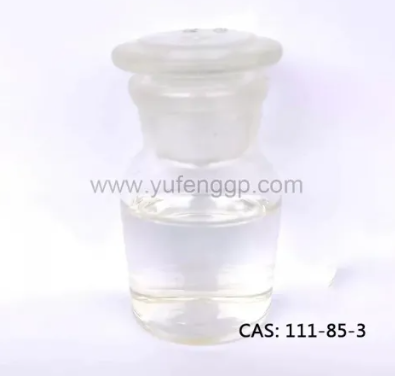1-Chlorooctane: Understanding the Properties, Uses, and Implications
Introduction
When it comes to the world of organic compounds, 1-chlorooctane holds a significant place. This article aims to delve into the various aspects of 1-chlorooctane, including its physical and chemical properties, uses, synthesis methods, industrial applications, and alternatives. By exploring this compound, we can better understand its role, impact, and relevance in different fields.
1-Chlorooctane, also known as octyl chloride or C8H17Cl, is an organic compound derived from the alkylation of octanol with hydrochloric acid. It belongs to the class of chloroalkanes and is commonly used as a solvent, intermediate, or reagent in various chemical processes. Its molecular structure consists of an octyl group (C8H17) attached to a chlorine atom (Cl).
Physical Properties of 1-Chlorooctane
1-Chlorooctane possesses several notable physical properties. It appears as a colorless liquid with a characteristic odor. It has a molecular weight of approximately 148.68 grams per mole and a boiling point of around 194°C. The compound is insoluble in water but readily mixes with organic solvents. Its density is typically around 0.888 grams per milliliter.
Chemical Properties of 1-Chlorooctane
In terms of chemical properties, 1-chlorooctane exhibits reactivity typical of alkyl chlorides. It can undergo various reactions, such as nucleophilic substitution, elimination, and oxidation. These properties make it valuable in organic synthesis, particularly in the production of pharmaceuticals, dyes, and other complex organic compounds. However, caution must be exercised due to its potential health and safety risks.

Uses of 1-Chlorooctane
1-Chlorooctane finds application in several industries and processes. It serves as a precursor in the synthesis of alkylated compounds, acting as an alkylating agent in reactions. Additionally, it is employed as a solvent for oils, resins, and waxes. Its ability to dissolve organic substances makes it useful in cleaning agents, degreasers, and as a chemical intermediate in the production of various chemicals. Furthermore, it can be utilized as a surface-active agent in textile and leather industries.
Health and Safety Considerations
When handling 1-chlorooctane, proper safety precautions must be taken. The compound can be harmful if inhaled, ingested, or comes into contact with the skin or eyes. It is essential to wear appropriate protective equipment, such as gloves, goggles, and a lab coat, when working with 1-chlorooctane. Adequate ventilation should be maintained in areas where it is used or stored. Furthermore, it is crucial to dispose of the compound safely according to local regulations.
Environmental Impact
1-Chlorooctane, like many organic compounds, can have adverse effects on the environment if not handled responsibly. Improper disposal or release into water bodies can lead to contamination and harm aquatic life. It is crucial to adhere to proper waste management practices and follow regulatory guidelines to minimize its environmental impact. As the demand for more environmentally friendly alternatives increases, it is important to explore greener options in various industries.
Synthesis of 1-Chlorooctane
The synthesis of 1-chlorooctane typically involves the reaction between octanol and hydrochloric acid. The octanol, usually derived from renewable resources, undergoes an alkylation process where it reacts with hydrochloric acid, resulting in the formation of 1-chlorooctane. Careful control of reaction conditions and purification steps ensures the production of high-quality 1-chlorooctane.
Industrial Applications
1-Chlorooctane finds extensive use in industries such as pharmaceuticals, agrochemicals, dyes, and coatings. It serves as a vital intermediate in the production of various drugs, pesticides, herbicides, and pigments. Its solvency properties make it useful for formulating paints, varnishes, and adhesives. The versatility of 1-chlorooctane contributes to its wide-ranging applications across diverse sectors.
Alternatives to 1-Chlorooctane
Given the environmental and safety concerns associated with 1-chlorooctane, researchers and industries are actively exploring alternatives. Substitutes that possess similar properties but are more environmentally friendly are being developed. These alternatives aim to provide comparable functionality while reducing the impact on human health and the environment. Some potential alternatives include bio-based solvents and other chloroalkanes with improved eco-profiles.
Conclusion
In conclusion, 1-chlorooctane is a significant compound with diverse applications in various industries. Its physical and chemical properties make it suitable for use as a solvent, reagent, and intermediate in organic synthesis. However, careful consideration must be given to its health and safety aspects, as well as its potential impact on the environment. Exploring alternatives that offer similar functionality but with improved eco-profiles is crucial for a more sustainable future.
FAQs
FAQ 1: Is 1-Chlorooctane harmful to humans? Yes, 1-chlorooctane can be harmful if inhaled, ingested, or comes into contact with the skin or eyes. It is important to follow proper safety protocols and handle it with caution.
FAQ 2: Can 1-Chlorooctane be used as a solvent? Yes, 1-chlorooctane is commonly used as a solvent for oils, resins, and waxes due to its ability to dissolve organic substances effectively.
FAQ 3: How is 1-Chlorooctane synthesized? 1-Chlorooctane is synthesized by reacting octanol with hydrochloric acid through an alkylation process. Careful control of reaction conditions and purification steps ensures its production.
FAQ 4: What are the alternatives to 1-Chlorooctane? Alternatives to 1-chlorooctane include bio-based solvents and other chloroalkanes with improved eco-profiles. These alternatives aim to provide similar functionality while reducing environmental impact.
FAQ 5: Is 1-Chlorooctane environmentally friendly? 1-Chlorooctane can have adverse effects on the environment if not handled responsibly. It is important to follow proper waste management practices and explore greener alternatives to minimize its environmental impact.



Comments
0